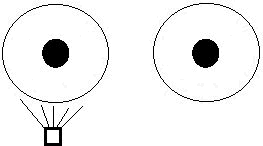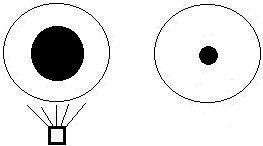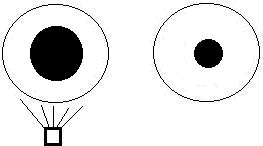.
|
.
This is a common case in pupillary examination. Always suspect this if there is no anisocoria. The direct and consensual pupillary responses to light are normal. The swinging light test shows abnormal light response of the affected eye (initial dilatation followed by constriction). For example, if the left eye were abnormal, both pupils constrict when the light is shown into the right eye. When the light is swung to the left eye, both pupils dilate. When the light is swung back to the right eye both pupils again constrict. This reaction indicates a defect in the afferent pupillary fibres from the left eye. The near reflex is normal. Further examination:
|
Questions:
1. What is the significance of a relative afferent pupillary
defect?


